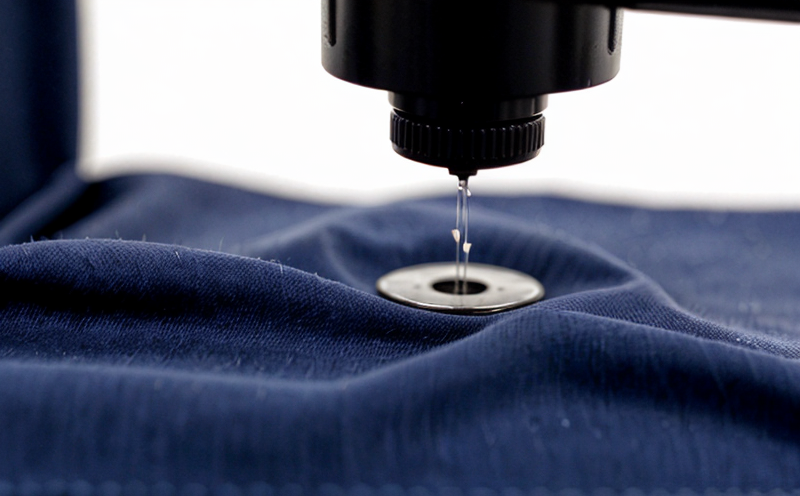Determining tear strength of textiles in wet conditions
Determining Tear Strength of Textiles in Wet Conditions Unlocking the Secrets to Durable Fabrics
In the world of textiles, ensuring that fabrics can withstand various environmental conditions is crucial for maintaining their performance and longevity. One such condition that poses a significant challenge to textile durability is wetness. When fabrics are exposed to water, their mechanical properties change, leading to reduced strength and potentially catastrophic failures. Determining tear strength of textiles in wet conditions is an essential laboratory service that helps manufacturers, designers, and quality control teams assess the performance of their materials under real-world scenarios.
The Importance of Tear Strength in Wet Conditions
Textiles are subjected to various types of stress and strain throughout their lifespan, including mechanical stress caused by wear and tear, environmental factors like humidity and temperature fluctuations, and chemical treatments. However, when fabrics get wet, their fibers swell, causing a significant reduction in strength and elasticity. This phenomenon is particularly pronounced in fibers with high water absorption rates, such as cotton and wool.
Determining tear strength of textiles in wet conditions involves subjecting the fabric to controlled amounts of moisture while measuring its resistance to tearing under tension. This process provides a critical insight into how fabrics will behave when exposed to wet environments, allowing manufacturers to anticipate potential failures and take corrective measures to improve durability.
Benefits of Determining Tear Strength of Textiles in Wet Conditions
Our laboratory service at Eurolab offers numerous advantages for businesses seeking to optimize their fabrics performance. Here are some key benefits
Improved Material Selection By testing tear strength in wet conditions, manufacturers can identify suitable materials that meet specific requirements and avoid costly mistakes.
Enhanced Product Reliability Understanding how fabrics perform under real-world conditions enables companies to design products with improved durability, reducing the likelihood of failures and customer complaints.
Reduced Warranty Claims and Returns By anticipating potential issues, businesses can minimize warranty claims and returns, ultimately saving on costs associated with product recalls.
Compliance with Industry Standards Determining tear strength in wet conditions helps ensure compliance with industry standards and regulations, such as those governing textile products for medical applications or outdoor gear.
Increased Competitiveness Companies that prioritize fabric durability can differentiate themselves from competitors by offering high-quality products with extended lifespan.
Cost Savings By optimizing material selection and reducing warranty claims, businesses can minimize costs associated with raw materials, production, and customer support.
How Eurolabs Laboratory Service Works
Our state-of-the-art laboratory at Eurolab is equipped with cutting-edge technology to simulate real-world conditions and accurately measure the tear strength of textiles in wet environments. Our experienced technicians will guide you through a seamless testing process, ensuring that your samples are handled with care and precision.
Heres an overview of our service
Sample Preparation We receive your fabric samples and prepare them for testing according to established protocols.
Testing Using specialized equipment, we subject the fabrics to controlled amounts of moisture while applying a standard tensile load to simulate real-world stress conditions.
Data Analysis Our software analyzes the test data, providing a detailed report on the tear strength of your fabric in wet conditions.
Frequently Asked Questions
What types of textiles can be tested for tear strength in wet conditions?
A Any type of textile can be tested, including woven and non-woven fabrics, knits, and blends.
How long does the testing process typically take?
A Testing times vary depending on the sample size and complexity, but most tests are completed within 24-48 hours.
What is the ideal sample size for tear strength testing in wet conditions?
A We recommend submitting samples with a minimum area of 100 x 100 mm to ensure accurate results.
Can I request customized testing protocols or specific test conditions?
A Yes, our laboratory is happy to accommodate your unique requirements and develop tailored testing protocols to meet your needs.
Conclusion
Determining tear strength of textiles in wet conditions is an essential service that helps manufacturers and designers optimize their fabrics performance. By understanding how fabrics behave under real-world scenarios, businesses can improve material selection, enhance product reliability, reduce warranty claims and returns, and increase competitiveness. At Eurolab, our expert technicians and state-of-the-art equipment ensure accurate and reliable results, providing you with the insights necessary to take your textile products to the next level.
Dont let wet conditions compromise your fabrics performance contact us today to learn more about how our laboratory service can help you unlock durable fabrics that meet your specific needs.




